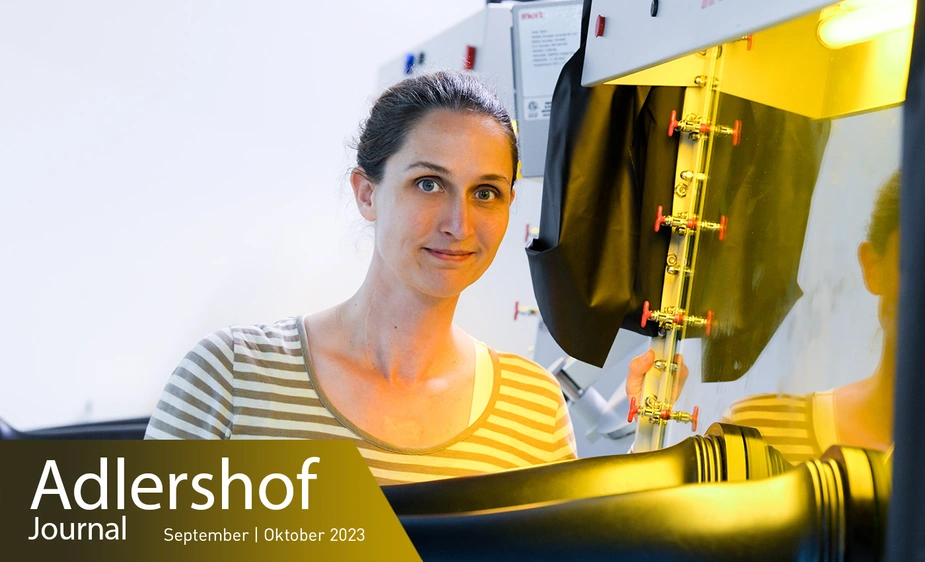A bright future
Eva Unger researches a class of minerals known as perovskites
They can be made to emit light – or used for generating electricity. Perovskites are semiconductors, and as such are ideally suited for use in electronic components. They are being investigated by the materials researcher Eva Unger and her team at Humboldt-Universität zu Berlin and Helmholtz-Zentrum Berlin.
“Perovskite is an umbrella term for materials with a distinctive crystal structure,” says Eva Unger. They are semiconductors, i.e., materials that are capable of having different energy levels. There is proof of semiconductors with a lower energy level but not higher. When the materials absorb the energy contained in sunlight, it pushes the charge carriers to the upper energy level. The energy they then release can be used electrically.
Eva Unger and her team investigate metal halide perovskites – materials that feature halogens such as bromine, iodine, or chlorine. They are particularly intriguing for research on solar cells. “Small-area perovskite solar cells are currently achieving efficiencies of 26 percent in laboratories.” This must be seen as a success pitted against solar cells made of silicon, which achieve an efficiency of just under 27 percent in a laboratory setting. “However, the development cycles for perovskite solar cells are significantly shorter – on the one hand, because they are seeing intensive research worldwide and, on the other hand, because they are very easy to handle.”
The Adlershof-based researchers inexpensively extract metal halide perovskites from solvents. To do so, they put the later “components” of the material into a solvent and apply it to a surface. As the solvent evaporates, crystalline perovskite layers form. The researchers are currently working on a series of tests on, for example, slot-die coating techniques to scale this process up. By doing so, they want to contribute to enabling industrial-scale production of perovskite solar cells. “So far, no other semiconductor exists that can be extracted from solvents and that reaches such high efficiency for solar cells,” says the professor, emphasising the technology’s great potential.
Many are pinning their hopes on perovskites because they can also be easily combined with other solar cell materials. “If a perovskite solar cell is applied to a silicon cell, record efficiencies of over 33 percent can be achieved. This means that the same surface area of a roof can produce significantly more electricity.” However, a few more obstacles have to be overcome on the way to large-scale application of perovskites in solar cells. One of them is the complex chemical processes that take place within the solutions from which they are made. What exactly happens here depends to a large extent on the ingredients of the solution and the external conditions – such as temperature or pressure. “This determines the chemical structure, the morphology, and the quality of the thin-film solar cell materials.” The researchers are still in the middle of understanding these processes in greater detail.
With their application-oriented basic research, the scientists want to contribute to the carbon-neutral energy generation of the future. “Together with scientific and industrial partners, we are currently launching a project called SolarTAP, for example, which is about the development of materials, prototypes, and components. We are seeking to advance the commercialisation of perovskite solar cells.” There are numerous other collaborations, including the EU project VIPERLAB, which the researchers are contributing to. Their common aim: pushing the energy transition forward.
Nora Lessing for Adlershof Journal
